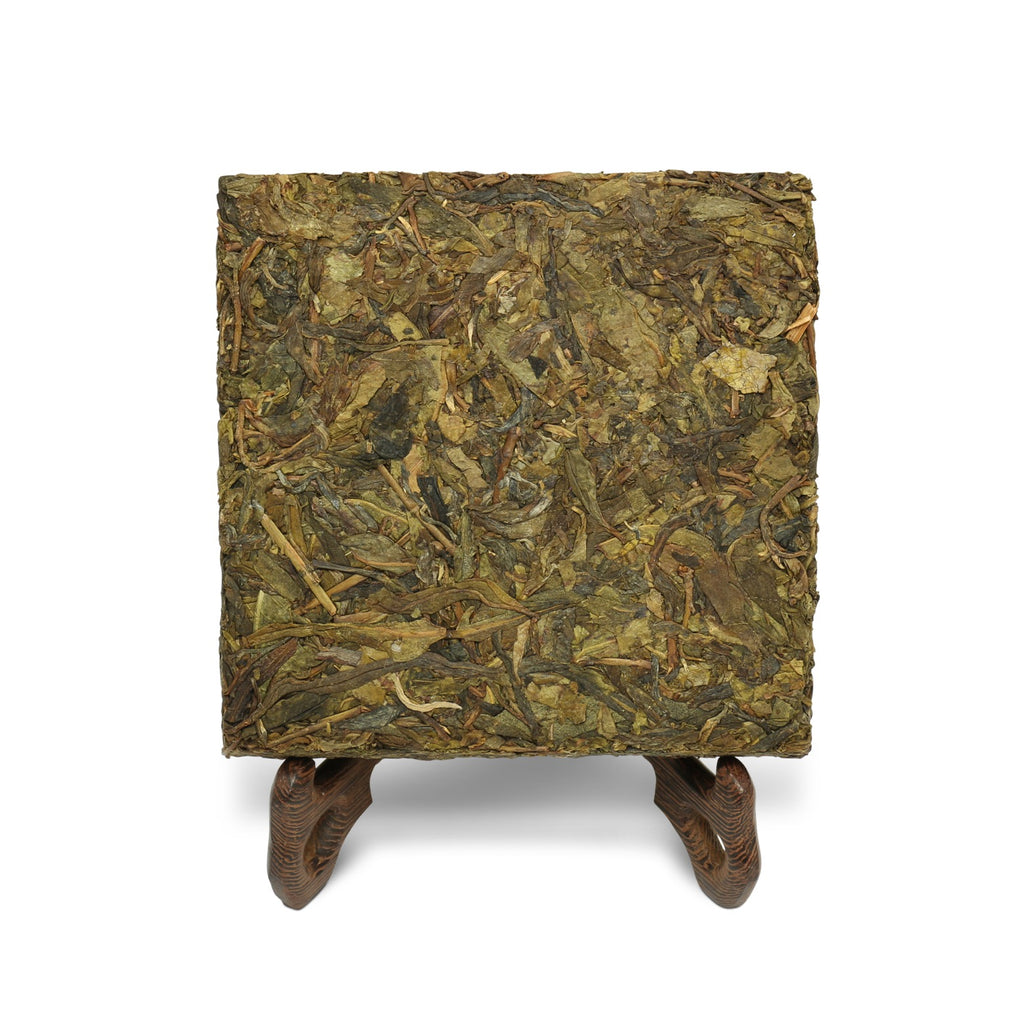Bingdao Huang Pian 2019
For lovers of complex yellow leaves.
The less-refined plucking from the tea plant finds its own superior classification with this sheng pu'er. Loosely pressed into these unusually square cakes are huang pian or 'yellow pieces' from the spring 2019 harvest in Bingdao, where tea gardens dot the slopes around Mengku River at altitudes of around 2000 m. It is from this environment that one can expect a multifaceted flavor profile in the cup, and this one is a diamond in the rough. After an initial rinse, fresh fragrances of orange peel emerge from the golden brew with a liquor that carries itself like molten honey, though the sweetness is more custard-like. It then slips into dry wood, spice, and leather, giving just enough astringency to complement its minerality. A sheng that the deeply-steeped acolyte will appreciate—in a lasting message, the slightly cooling hui gan brings in the sensations of springtime.
- ORIGIN: Bingdao, Shuangjiang, Lincang, Yunnan, China
- FACTORY: Shuangjiang Mengku
- MEANING: Ice mountain yellow leaf (bing dao huang pian)
- CULTIVAR: Da Ye Zhong
- HARVEST TIME: 16 April 2019
- TASTE: Orange peel, custard, nutmeg
- Quantity: 6g / 500ml
- Water temperature: 100°C
- Infusion time: 5 min
- Quantity: 5g / 100ml
- Water temperature: 100°C
- Several short infusions
For best results in gongfu cha, brew in the traditional gaiwan or in a Yixing teapot. Too high water temperature would burn the leaves, resulting in bitter taste.
Additional Information
'Huang pian' tea
Literally 'yellow pieces', huang pian refers to leaves that have been sorted out after initial processing for being unsightly—having a yellow color, frequently, or irregularly rolled, etc.—relative to the desired appearance for the type of tea. Farmers often retain this material for personal consumption, usually being less valuable, but it is sometimes resold or pressed into 'huang pian' cakes, which depending on the provenance could still be more expensive than select teas from other regions. The flavor of the finished tea is not necessarily worse, per se, but can be milder or simpler and may age more gradually.







